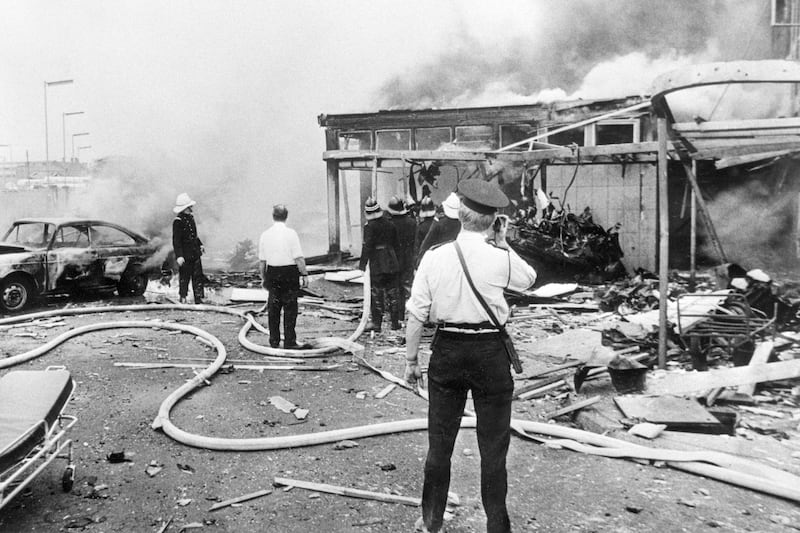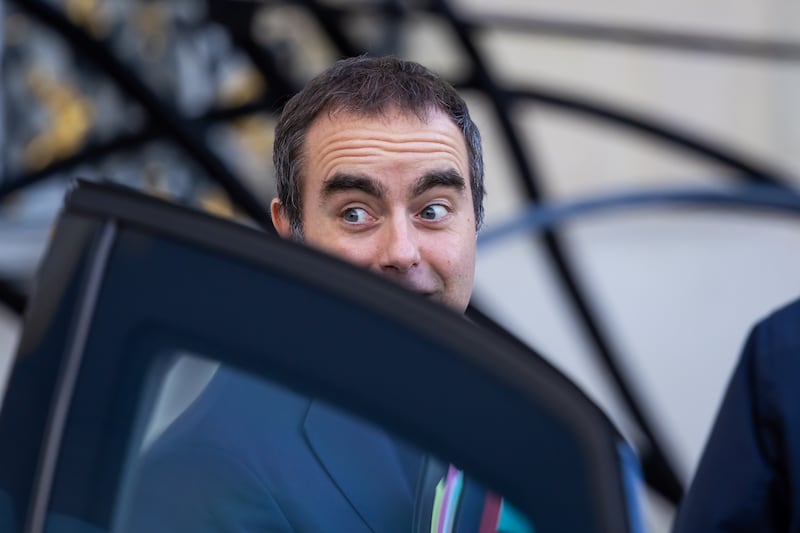Barry Keoghan and Robbie Ryan, star and cinematographer of Andrea Arnold’s Bird, did a good job of seeming happy to see The Irish Times at the Friday morning press conference in the Palais at the Cannes film festival. I was interested to hear if Keoghan drew on his inner city Dublin past when playing Bug, father of a hectic family, in Arnold’s typically earthy Kentish drama.
“In terms of growing up in Summerhill, yeah, there were a lot of similarities in the working class,” Keoghan said. “I see a lot of traits in Bug that remind me of home. He’s a pure chancer.”
In the aftermath of an Oscar nomination for The Banshees of Inisherin and the cult success of Saltburn, Keoghan has, no doubt, been inundated with offers, but working with Arnold, director of Fish Tank and American Honey, was always a priority for him. She has won the Jury Prize three times at this festival.
“I have always wanted to work with Andrea Arnold. I have been saying this over and over again. I wasn’t given a script. I wasn’t given anything like that. And that just shows the confidence I have in her. The belief. The love. I’d do anything that she makes. I know I’ll be fully immersed. To be surrounded by non-actors gets a better performance from you. That’s a bit selfish maybe. But it brings me on a journey,” Keoghan said.
RM Block
He was also asked about his sudden association with eccentric dance. That final twirl in Saltburn is already the stuff of meme heaven. He gets another chance to show his dancing skills towards the close of Bird. He also gets to ride an electric scooter to Fontaines DC.
“I don’t think I can dance, honestly,” he said. “I think the beauty of dance is the effort to try and make it attractive. Music plays a big part in everything I do. When you immerse yourself in a part you want to surround yourself with a playlist. I have played characters who don’t listen to music. But, yeah, it’s a big part of building character.”
He plays an amiably addled new father in Bird. That’s a role he has been playing in real life since the birth of his son Brando in 2022.
“How does it relate? Being a father is foreign to me, it’s new to me. There’s a lot of relation there.”
Miller unimpressed with Streep’s accent
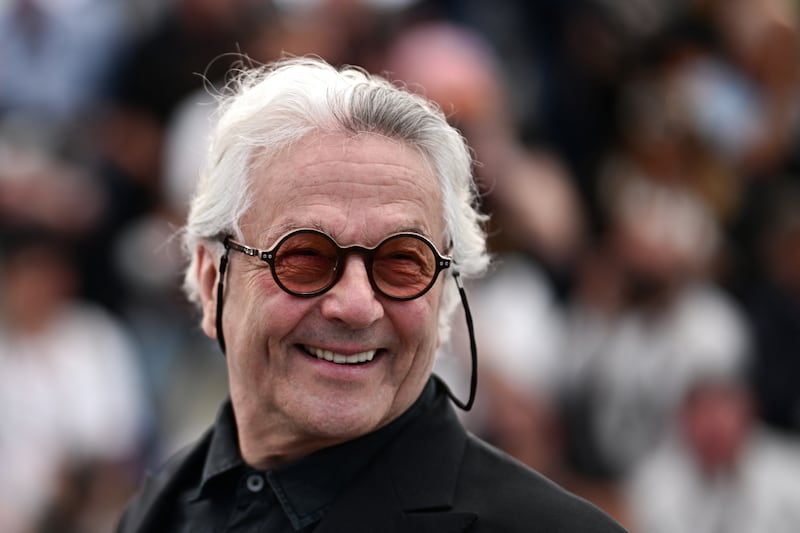
A day after getting her Palme d’Or, Meryl Streep was back for a “rendezvous” in the Debussy Theatre. These interviews are rarely taxing, but the relaxed atmosphere does draw out surprising confessions and opinions. She was interesting on how Cannes has changed since she won best actress here in 1988 for A Cry in the Dark. Less structured then, but, for actors, maybe more stressful.
“There wasn’t the same security so that all the barriers weren’t there,” Streep said, “That was insane. And I almost didn’t recover from that. I went to the hotel room, and I couldn’t believe how wild it was. The world has changed a lot.” She remembered those times less than fondly as “the days when there was only one woman in the movie”. Not surprisingly, the subject of her gift for accents came up – something being discussed publicly elsewhere. “I do pick it up,” she told Didier Allouch. “So it’s not a difficult thing.”
The next day, at the press conference for George Miller’s Furiosa: A Mad Max Story, the director was discussing how hard it is for an outsider to get an Australian accent right. “Don’t try it. It’s too difficult. Great people have tried it. But it’s not a common accent,” he said. An Australian journalist beside me yelled out: “Meryl Streep!” She then offered a variation on Streep’s most famous line from a Cry in the Dark. “A Dingo ate my baby!” Miller agreed: “Meryl, genius as she was, didn’t quite nail it.” How dare he!
Miller also explained that at the conference that, despite years in production, he finished Furiosa just 2½ weeks before Cannes. “I came out of retirement to work on this film,” he said, half-serious.
‘Go, film workers, go!’
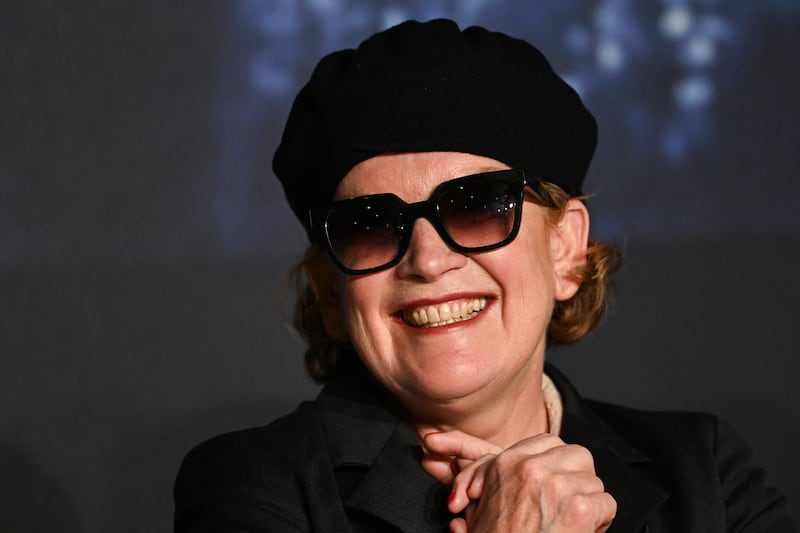
To the opening night of Directors Fortnight at the Theatre Croisette just a few hundred metres east of the Palais. Set up in the aftermath of the 1968 disturbances, this strand has always been seen as a funkier, less up-itself version of the main event. Yet hotly anticipated movies have opened here – the fight to get into Robert Eggers’s The Light House in 2019 was among the most frantic I have seen at Cannes. This year the programmers have, however, gone almost entirely for emerging film-makers.
The opening event hammered home its alternative routes by welcoming the collective “Sous les écrans, la dèche” to address the crowd on the precarious nature of professions such as technicians, make-up artists and publicists. “We are also witnessing growing pressures in the wake of what is happening in the US on the place of directors in making and circulation of film, questioning our rights and practices,” the audience was told. Andrea Arnold, there to receive the Carrosse d’Or for an outstanding body of work that has secured her three jury prizes at this event, was unambiguously supportive. “Go, film workers, go!” she said with a raised fist.
We have yet to catch up with Rungano Nyoni’s On Becoming a Guinea Fowl, as the Un Certain Regard screening clashed with Bird, but out-there feminist drama, produced by Dublin’s Element Pictures, went down well with critics in attendance. Variety described the movie as “tremendous” and suggested that “Nyoni’s mordant, shattering film suggests defiant memory will outlive denial”. The Hollywood Reporter said the director “reaches for honesty, and what she uncovers is at once disquieting and deeply absorbing”. On Becoming a Guinea Fowl is the follow-up to the Welsh-Zambian director’s admired I Am Not a Witch.
Review: Megalopolis
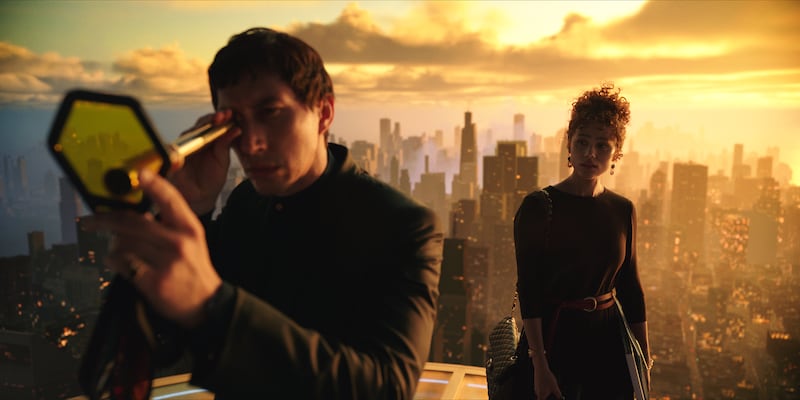
“What is time?” Cesar Catilina, in the person of Adam Driver, muses towards the end.
If he’d just sat through all 138 minutes of Francis Ford Coppola’s famous – now maybe notorious – vanity epic he wouldn’t be asking that question. Seconds, minutes, hours and (it seems, anyway) days assert their presence unforgivingly as the film staggers its way to nowhere worth going. If you don’t enjoy the first five minutes than gird your loins. It’s like that all the way through.
As has been much publicised, the film has to do with an insane architect who destroys a version of New York with the intent of putting it back together as a kinder, greener Utopia. To hurry along the task, he has invented a magic component called Megalon which, like whatever that stuff is called in Black Panther, does everything bar stop time. Oh, hang on. It can stop time. Or perhaps Cesar is doing that himself.
The other two forces in the city are mayor Franklyn Cicero, played by a dignified Giancarlo Esposito, and appalling banker Hamilton Crassus III, to whom Jon Voight devotes the oiliest of his gifts. Nathalie Emmanuel glistens as Cicero’s saintly daughter. Aubrey Plaza has more fun than anyone else as a ruthless news anchor who just happens to be Crassus’s niece.
You will have noted the illusions to the classics there. Coppola is not backward in reminding us that we are dealing with a variation of ancient Rome. Title cards appear chiselled in stone. Laurence Fishburne intones swathes of ancient wisdom as if auditioning for the next take on I, Claudius.
Parallels to Roman history emerge as the madness drags on, but the disorder is so overwhelming that few will have the patience to tease them out. People do die. People do marry each other. But the scenes could be randomly shaken and reordered a dozen times without much altering the numbing effect.
One cannot deny the thing has set pieces. A USSR (?) spaceship crashes to earth. Grace VanderWaal, as a sort of vestal virgin, splits into five versions of herself and warbles a pretty decent tune about her own purity. The most extraordinary moment arrives when – something few readers will get to experience, I imagine – a living-breathing man walks before the audience and interviews Cesar on screen. It was extraordinary because I had no idea it was going to happen. It was extraordinary because one can’t imagine why a director would stage something so utterly banal.
It is 45 years since Coppola brought the already controversial Apocalypse Now to Cannes and promptly won his second Palme d’Or. Largely financed by the director, contemplated for decades, Megalopolis is never going to replicate the success of that Vietnam epic. It will have fans. Such large-scale failures always do. There are still people raving about Richard Kelly’s Southland Tales, a famous Cannes flop in 2006. But Megalopolis, all shot in the same cocktail-bar glow, is just too monotonous to justify a drunken midnight screening. Then again, Shia LaBeouf’s turn as a camp Trumpian demagogue is sometimes funny on purpose. And Plaza just adores the sleaziness of her character’s ambition. “You’re as anal as hell,” she says to the uptight Cesar. “And I’m as oral as hell.” Maybe it does have midnight movie potential.
Review: Furiosa: A Mad Max Saga
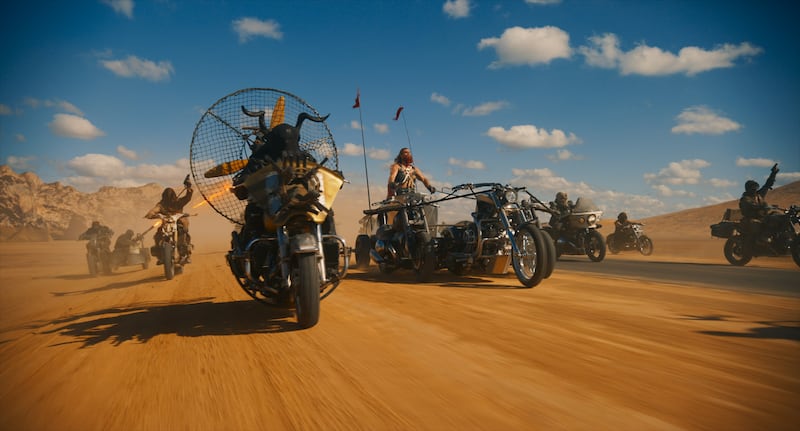
Max isn’t quite back, but George Miller, the road warrior’s only progenitor, has rumbled down La Croisette to reclaim some territory. It was in 2015 that Mad Max: Fury Road, following a troubled production, arrived at Cannes to garner reviews more usually handed out here to art house mope-fests. The 2024 festival duly lay down for a prequel that rivals the original film for undiluted volume and commitment to the revs. Nobody could reasonably question the balletic complexity of the automotive stunts. Indeed, the fourth and, now, fifth films in the post-apocalyptic sequence have carved out a subgenre for themselves: cinema as automotive assault.
The film offers a backstory for the eponymous road warrior who, in the cyclonic form of Charlize Theron, emerged out of relative obscurity in Fury Road. For much of the film she is played by the impressively stoic juvenile Alyla Browne. Whisked away by a biker tribe, she becomes the adopted child – or the human property, anyway – of a cartoon maniac called Dementus (Chris Hemsworth, in full Tasmanian devil mode) and ultimately grows into a vengeful Anya Taylor-Joy.
There are a lot of people in Furiosa. Tom Burke pops up as an unmistakable pseudo-Max. Lachy Hulme plays the messianic Fury Road baddy Immortan Joe. There is a Scrotus and a Rictus Erectus. But, for all that clutter, Furiosa is fatally short of personalities. One often feels as if they are watching the world’s most intricate strategy game being played out by unseen giants. It looks lovely. Taylor-Joy is a different, but still satisfactory, take on the Theron’s more robust Furiosa. Yet nobody seems to be breathing real air. No human interactions connect.
At the press conference, Miller was cautious about the possibility of more Mad Max films. If Furiosa is a hit then another is surely inevitable. One suspects this accomplished, though somewhat hollow, movie may end up as the central holding pattern in a trilogy.



















